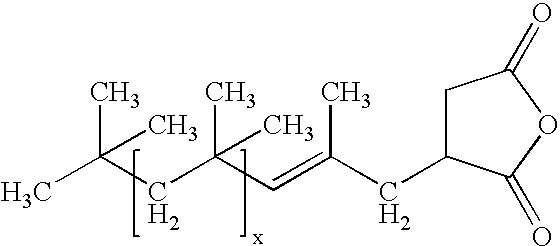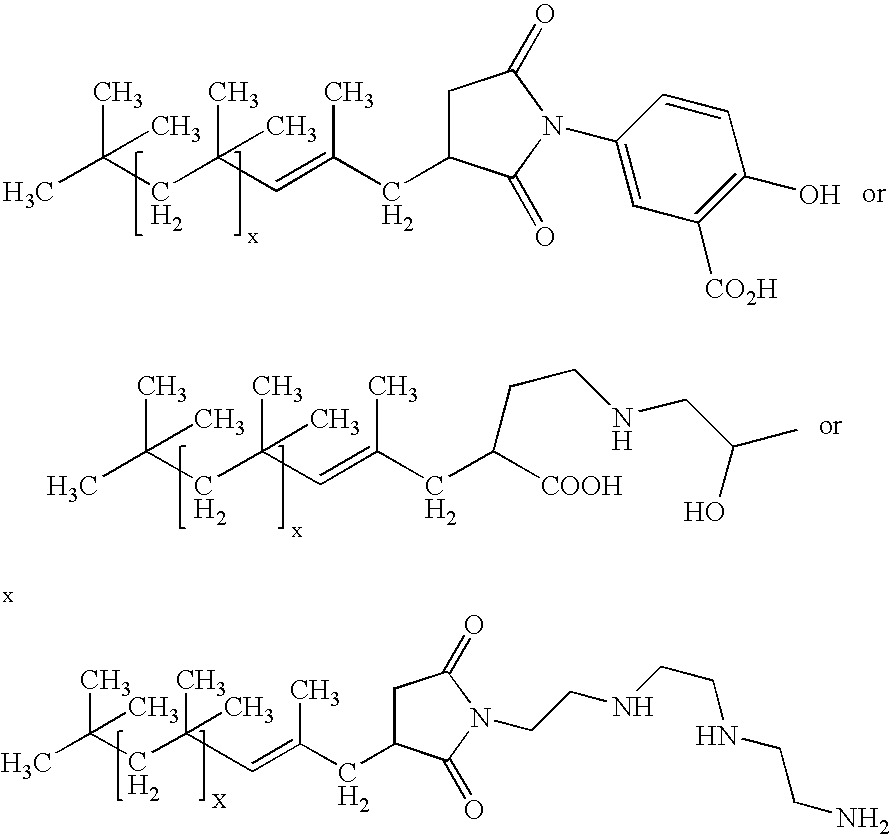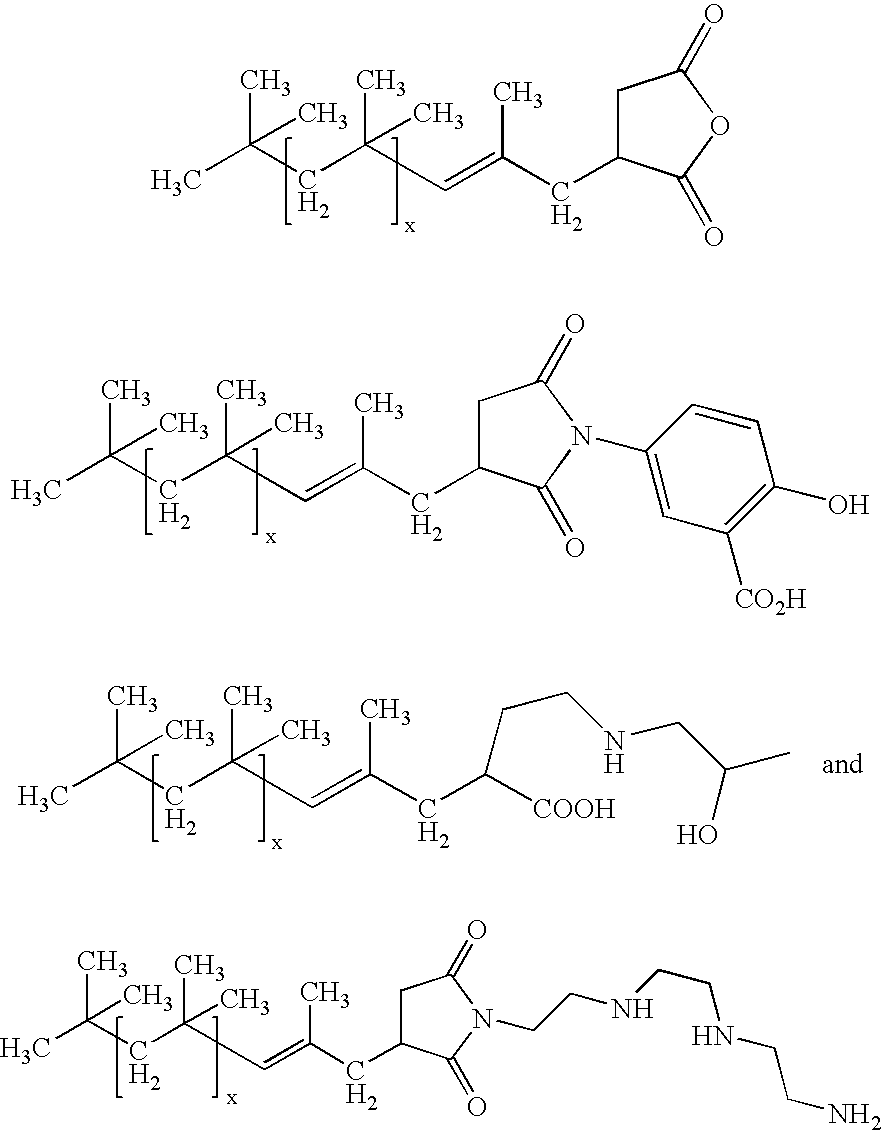Polyisobutenyl containing dispersions and uses thereof
a technology of polyisobutenyl and dispersions, applied in the field of polyisobutenyl containing dispersions, can solve the problems of often adverse rheological properties, and achieve the effect of reducing the overall dispersant loading
- Summary
- Abstract
- Description
- Claims
- Application Information
AI Technical Summary
Benefits of technology
Problems solved by technology
Method used
Image
Examples
examples 1 and 2
[0018]Example 1 was prepared by placing the sample containing 1.0 mm zirconia beads grinding media in a sonication bath for 6 hrs at 65 C. The solvent was mineral spirits. Example 2 was prepared in the same manner but 0.1 mm zirconia beads were used. The solvent was a high boiling (140-180 C) petroleum ether. The dispersions prepared in Examples 1 and 2 had relatively small particle sizes and exhibited only minor settling after several days.
TABLE 1Dispersion of ZnO Nanoparticles in Organic Solvent with PIBSAMineralPetroleumParticle size,Ex.ZnOSpiritsEtherPIBSAAMP-95nm11088.91.00.11182989.90.90.255Compositions are in wt %
examples 3-5
[0019]The dispersions in Examples 3-5 were prepared by mixing the ZnO and dispersant with only enough solvent to yield a high solids (70-75%) paste. The paste was processed on a three-roll mill for five passes with a gap setting of 5 mils and a roll speed of 100 rpm. After milling, the pastes were diluted with the remainder of the solvent to produce the compositions shown in Table 2. The diluted dispersions had a relatively small particle size and exhibited only minor settling after several days.
TABLE 2Dispersion of ZnO Nanoparticles in Organic Solvent with PIBSA1-phenoxy-2-OLOAParticle size,Ex.ZnOpropanol15667PIBSAnm349.448.12.5106449.448.12.599549.448.12.5102Compositions are in wt %
examples 6-8
[0020]Reaction products of PIBSA with either Ancamine 1637 Mannich Base or 4-aminosalicylic acid were prepared by refluxing the components shown in Examples 6-8 for four hours and then removing solvent at atmospheric pressure. The reaction products were used without further purification.
TABLE 3Reaction Product of PIBSA with AminesAncamine4-aminosalicylicEx.PIBSA1637acidtoluenexylene635.311.952.8741.37.051.78323.964.1Compositions are in wt %
[0021]Table 4 illustrates the use of the reaction products from Table 3 as dispersants for alumina, zirconia and ceria nanoparticles.
PUM
| Property | Measurement | Unit |
|---|---|---|
| particle size | aaaaa | aaaaa |
| composition | aaaaa | aaaaa |
| dispersion | aaaaa | aaaaa |
Abstract
Description
Claims
Application Information
 Login to View More
Login to View More - R&D
- Intellectual Property
- Life Sciences
- Materials
- Tech Scout
- Unparalleled Data Quality
- Higher Quality Content
- 60% Fewer Hallucinations
Browse by: Latest US Patents, China's latest patents, Technical Efficacy Thesaurus, Application Domain, Technology Topic, Popular Technical Reports.
© 2025 PatSnap. All rights reserved.Legal|Privacy policy|Modern Slavery Act Transparency Statement|Sitemap|About US| Contact US: help@patsnap.com



